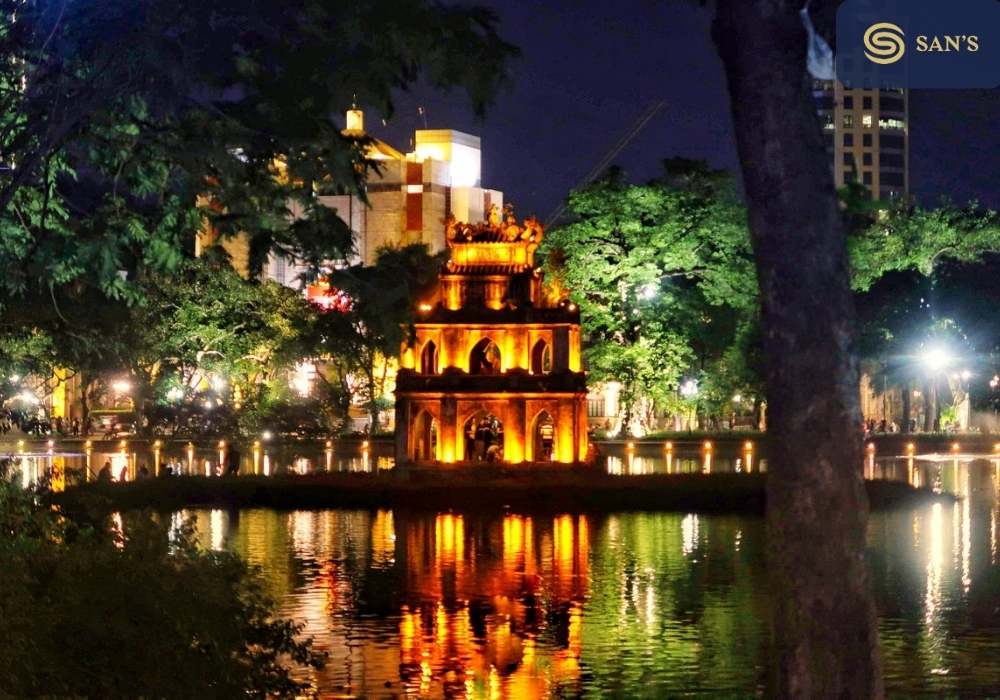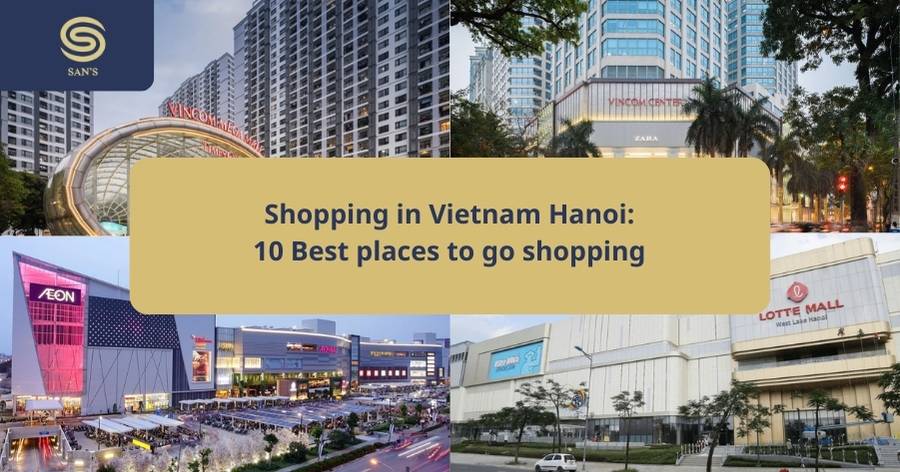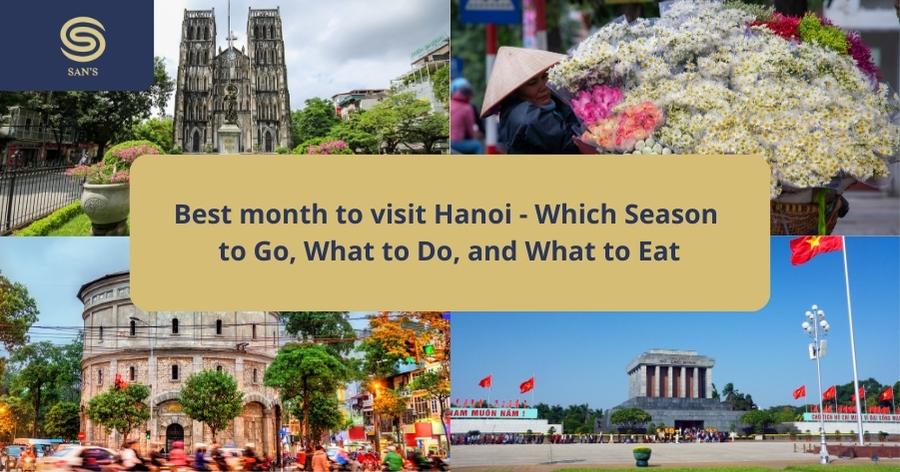As travelers, we often seek to uncover the soul of a city, beyond its towering structures and renowned landmarks. Herein, we embark on a journey to uncover what to see in Hanoi. This is not an ordinary expedition but an intimate sojourn where every experience, every encounter, is a delicate thread adding depth to our understanding of this illustrious city. We venture beyond the tourist trails and delve into the city’s rich cultural treasures that promise an enriching sojourn.

This narrative is more than a travel guide – it’s an invitation to immerse yourself in the top 5 cultural wonders that define Hanoi. It’s for the discerning traveler keen on unraveling what to see in Hanoi, offering more than just visual spectacles, but moments that resonate, stories that linger, and experiences that transform.
Prepare to step into a world where every artifact tells a story, each tradition is a living testament of the past, and every interaction is a step closer to the soul of a city that pulsates with an unwavering cultural vibrancy.
What to see in Hanoi – Top 5 Cultural Attractions
1/The Temple of Literature: A Blend of History and Culture
Nestled in the heart of Hanoi lies the Temple of Literature, a historical marvel that has stood the test of time, echoing the grandeur of bygone eras. Established in 1070 by Emperor Ly Thanh Tong, it is a masterpiece dedicated to Confucius, scholars, and sages, marking Vietnam’s first university.

The temple, with its well-preserved architecture, intricate carvings, and serene courtyards, paints a vivid tapestry of Vietnam’s glorious past. Each pavilion and hall tells tales of academic excellence, royal ceremonies, and profound philosophies that have shaped the nation’s identity.
The Cultural Epitome
In the quest to discover what to see in Hanoi, the Temple of Literature emerges as a sanctuary where history, culture, and academia converge. It’s not just a monument but a living narrative of Vietnam’s intellectual and artistic heritage.
Every stone, inscription, and statue within this venerable compound is imbued with stories of legendary scholars, ancient rituals, and a culture deeply rooted in the pursuit of knowledge. As one walks through its venerable halls, there’s an unspoken communion with the great minds that once graced this sanctuary, offering an immersive experience that goes beyond sightseeing.
Making the Most of the Visit
Visiting the Temple of Literature is akin to stepping into a world where time stands still, and the clamor of the modern world fades into a profound silence. To fully embrace its essence, visitors are advised to allocate ample time to meander through its five courtyards, each offering a distinct experience.
Early mornings or late afternoons prove to be ideal, offering a serene ambiance, where the soft rays of the sun breathe life into the ancient inscriptions. Armed with a guide or an informative booklet available at the entrance, one can unravel the nuanced details that make this temple a pinnacle of what to see in Hanoi. Each visit promises more than a visual feast; it’s a soulful journey through the annals of Vietnam’s rich cultural and intellectual legacy.
2/Water Puppet Theatre: A Theatrical Legacy
The mesmerizing art of Water Puppet Theatre traces its roots to the fertile rice paddies of the Red River Delta in northern Vietnam, over a millennium ago. This unique performance art blossomed in the ancient villages, where locals, imbued with a creative spirit, turned flooded rice fields into dynamic stages.
Puppets would dance gracefully upon the water’s surface, telling tales of legendary heroes, mythical creatures, and life in the countryside. Crafted from wood and brought to life by skilled puppeteers hidden behind a curtain, these puppets embarked on animated dances, their tales echoing with the strums of traditional musical instruments.

Witnessing the Magic
As one delves into what to see in Hanoi, the Water Puppet Theatre emerges as an unmissable spectacle, a living relic of Vietnam’s cultural richness. Each performance is a harmonious blend of intricate puppetry, evocative music, and artistic storytelling.

The aquatic stage becomes a canvas where age-old tales unfold, illuminated by artful lighting and accompanied by the soul-stirring melodies of traditional instruments. Witnessing this art form is akin to stepping into a world where folklore, art, and history converge, offering viewers a mesmerizing glimpse into Vietnam’s cultural soul.
A Visitor’s Perspective
For those venturing to explore this artistic legacy, planning is key to ensuring an enriched experience. Performances, popular among both locals and tourists, are often sold out. Hence, securing tickets in advance is highly recommended. The best seats are typically in the middle rows, offering an unobstructed view of the aquatic dance unfolding before your eyes.
The Thang Long Water Puppet Theatre, located near Hoan Kiem Lake, is one of the most renowned venues to experience this art. Equipped with a ticket and an anticipatory spirit, every spectator is promised a journey where the waters shimmer with the dances of elegantly crafted puppets, echoing the artistic and cultural legacy of Vietnam – a spectacle that defines what to see in Hanoi.
3/Hoan Kiem Lake and Ngoc Son Temple: Nature Meets Culture
The Legendary Harmony
Hoan Kiem Lake, also known as the “Lake of the Returned Sword,” is where nature and legend intertwine, offering a serene escape in the midst of Hanoi’s bustling cityscape. Surrounded by the verdant foliage, the lake is more than a natural wonder – it’s the keeper of a legendary tale where Emperor Le Loi returned a magical sword to the Golden Turtle God.

On its tranquil shores lies the Ngoc Son Temple, a cultural edifice that stands as a testament to Vietnam’s architectural and spiritual heritage, further enriching the narrative of the lake.
A Must in the ‘What to See in Hanoi’ List
The poetic allure of Hoan Kiem Lake coupled with the enigmatic presence of Ngoc Son Temple elevates this destination to a must-visit landmark in the cultural odyssey of Hanoi. Every element here, from the tranquil waters and the iconic red The Huc Bridge to the artistic engravings within the temple, echoes the harmonious blend of natural beauty and cultural richness.

It’s a space where one can witness local couples capturing their moments of togetherness, artists finding their muse, and elders immersed in the rhythmic dance of Tai Chi at dawn.
An Explorer’s Tips
To truly immerse in the enchanting allure of Hoan Kiem Lake and Ngoc Son Temple, visitors are encouraged to arrive early in the morning or linger during the sunset. These moments not only offer a respite from the city’s energetic pulse but also a magical light that accentuates the mystical aura of the place.
A leisurely stroll around the lake, punctuated by a visit to the temple, reveals hidden facets of Hanoi’s culture. Local guides, often available around the area, can offer enriched narratives of legends, history, and cultural nuances, turning a visit into an enlightening experience that resonates deeply with the quest to discover what to see in Hanoi.
4/Dong Xuan Market: A Bustling Cultural Hub
Dong Xuan Market, with its foundation stones laid in the French colonial period, stands as a testament to Hanoi’s commercial and cultural evolution. Over the decades, it has transformed from a small trading post into the city’s largest indoor market.

A walk through its crowded aisles is a journey through time, where each stall, each vendor, epitomizes the city’s rich trading history and vibrant cultural life. The market, with its high ceilings and historical architecture, houses a myriad of items, from fabrics and handicrafts to exotic foods, each echoing the diverse tapestry of Vietnam’s culture.
A Vibrant Chapter of ‘What to See in Hanoi’
When unraveling the enigma of what to see in Hanoi, Dong Xuan Market emerges as an unmissable chapter. It’s a place where the city’s pulse is most palpable, and its cultural diversity most apparent. The market is a melody composed of the chatter of vendors, the aroma of authentic Vietnamese cuisine, and the vibrant display of goods that line its corridors.
For the culture enthusiast, every visit is an opportunity to witness local life, participate in the art of bargaining, and acquire unique souvenirs that embody the essence of Hanoi.

Navigational Insights
Navigating Dong Xuan Market can be both an exhilarating and overwhelming experience. Visitors are advised to embark on this journey with a sense of curiosity and adventure. Early mornings offer a glimpse into the market’s bustling set-up, while late afternoons are ideal for those looking to explore its varied offerings at leisure.
A local guide can be invaluable, offering insights into the market’s best-kept secrets, assisting in the art of bargaining, and unveiling cultural anecdotes that transform a shopping expedition into a cultural immersion. As a chapter of what to see in Hanoi, Dong Xuan Market is not just a destination but an experience that brings one face-to-face with the city’s vibrant heartbeat.
5/Ho Chi Minh Mausoleum and Museum: A National Reverence
The Ho Chi Minh Mausoleum and Museum stand as solemn yet magnificent structures, safeguarding the legacy of one of Vietnam’s most revered figures – Ho Chi Minh. Nestled amidst the lush gardens and tranquil vistas of Ba Dinh Square, the mausoleum is not just an architectural marvel but a sanctuary where history, reverence, and national pride converge.

It is here that the embalmed remains of ‘Uncle Ho’ repose in eternal slumber, encased within the cold, grey edifice, reminiscent of the Soviet architectural style.
Etching the Experience
In the odyssey to decipher what to see in Hanoi, the Ho Chi Minh Mausoleum and Museum are not merely stops but essential milestones. They offer an intimate glance into the life and legacy of the man who led the nation through tumultuous chapters to independence.
Every artifact, photograph, and document housed within the museum’s halls is a silent narrator of tales of resilience, leadership, and national identity. The mausoleum, with its stoic guards and solemn aura, invites visitors into a space of reflection and reverence.
A Comprehensive Guide for Visitors

Visiting the mausoleum requires adherence to a code of conduct befitting the reverence of the site. Modest attire and a respectful demeanor are prerequisites. The mausoleum is open to visitors in the mornings, from Tuesday to Thursday and on weekends, with closures during the afternoons and Mondays for maintenance.
It is advisable to arrive early to circumvent the long queues and the midday heat. The museum, located in the vicinity, welcomes visitors with comprehensive exhibitions that unveil the multifaceted persona of Ho Chi Minh, etching an experience that lingers long after the journey, echoing the profound narrative of what to see in Hanoi.
We’ve explored the cultural tapestry of Hanoi, journeying through historical sites, engaging performances, serene landscapes, bustling markets, and revered monuments to unveil the city’s rich, diverse offerings in response to what to see in Hanoi.
FAQs about What to see in Hanoi
Q1: What is the best time of year to visit Hanoi for cultural exploration? What to see in Hanoi?
A1: The best time to visit Hanoi for cultural explorations is during the autumn (September to November) and spring (March to April) seasons when the weather is pleasant, making it comfortable to explore the outdoor attractions and participate in cultural events.
Q2: Are there any dress codes to follow when visiting religious or cultural sites in Hanoi?
A2: Yes, it’s essential to dress modestly when visiting religious or cultural sites. It is advisable to wear clothing that covers your shoulders and knees and to avoid revealing attire to show respect to the local customs and traditions.
Q3: How do I get tickets to the Water Puppet Theatre?
A3: Tickets can be purchased directly at the theatre’s ticket counter or online on their official website. It’s advisable to buy tickets in advance as shows often sell out.
Q4: Is it possible to explore Hanoi’s cultural attractions on a budget?
A4: Absolutely! Many of Hanoi’s cultural sites, including temples and markets, are free to explore or have a minimal entry fee. Street food is also a budget-friendly option to experience the local cuisine.
Q5: Can I take photos inside the Ho Chi Minh Mausoleum?
A5: No, photography is strictly prohibited inside the mausoleum. Visitors are expected to maintain a respectful silence and follow the conduct guidelines when inside.
Q6: Are guided tours available for a more in-depth cultural experience in Hanoi?
A6: Yes, numerous guided tours offer insights into Hanoi’s rich history, culture, and attractions. They can be a great way to gain deeper insights and discover hidden gems in the city.
Q7: How safe is it to explore Hanoi at night?
A7: Hanoi is relatively safe to explore at night, with vibrant night markets and street food scenes. However, like any other city, it’s always best to stay in well-lit areas and be aware of your surroundings.
Q8: Is English widely spoken in Hanoi?
A8: English is commonly understood in tourist areas, hotels, and restaurants. However, learning a few basic Vietnamese phrases can enhance your cultural experience.
Q9: What are some must-try cultural experiences in Hanoi?
A9: Must-try experiences include exploring the Old Quarter, attending a Water Puppet show, visiting the Temple of Literature, and tasting the renowned street food.
Q10: Are there any cultural etiquettes I should be aware of?
A10: Respectful behavior and dress are appreciated. Avoid public displays of affection, pointing feet at people or sacred objects, and raising your voice. Always ask for permission before taking photos of locals.





